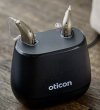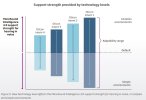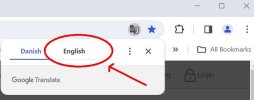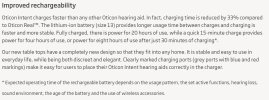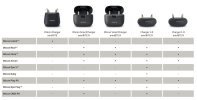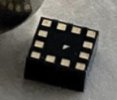pvc
Well-Known Member
- Joined
- Apr 12, 2023
- Messages
- 3,525
- Reaction score
- 831
Oticon New Sirius Platform, One new model (Oticon Intent miniRITE). Updated the DIY School Hearing Aids PDF file (Big-5 Platforms Chips) to reflect the changes. Note that Bernafon and Philips/Costco will also be updated with new models in the near future.
Images:
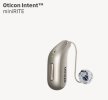
Images of (charging-contacts) and new (miniFit Detect speakers) linked to images posted by HoH-Community member @fireinzell
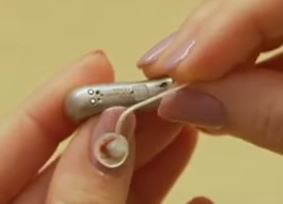
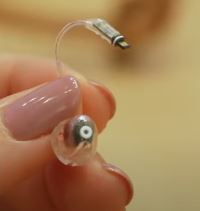
Oticon Global says;
Here's a clip below of the updated Big-5 Platforms Chips Note that the release date is not highlighted in Red meaning that RED = new chip/processor Also Note this forum post copy of DIY School will become obsolete while DIY School itself will be updated. Also, you can click the light-blue-colored links below which will take you to forum discussion topics where you will find more discussion and information about the specific hearing aid model.
William DeMant/Oticon, Bernafon, Philips, Sonic
*=Firmware Update requires Hi Pro
- We present the world's first sensors that measure user intent. They do this by detecting your head and body movements and adjusting the support you get as your listening needs change. Even in challenging listening situations, you will get the individually adapted support you need to be able to hear speech clearly and take part in life
- New Lithium-ion charger technology - has contacts - this is not inductive charging
- New miniFit Detect speakers - these are not miniFit speakers - has a chip inside to communicate with the fitting software
- Next-generation Bluetooth® LE Audio
Images:

Images of (charging-contacts) and new (miniFit Detect speakers) linked to images posted by HoH-Community member @fireinzell
Oticon Global says;
- Improved rechargeability; Oticon Intent is the fastest charging Oticon hearing aid ever. In fact, it comes with a 33% reduction in charging time compared to Oticon Real™. The size 13 lithium-ion battery gives users more power between charges and provides faster and more stable charging. When fully charged it offers 20 hours of use, while a speedy 15-minute charge delivers users 4 hours of battery life, or 8 hours of power in just a 30-minute charge*. Our new desk charger is designed from the ground up to fit seamlessly into each user’s life. It’s highly stable, making it easy to use every day, while being both discreet and pleasing to the eye. What’s more, colour coding ensures easy and intuitive placement of hearing aids. *Expected use time for rechargeable battery depends on use pattern, active feature set, hearing loss, sound environment, battery age and use of wireless accessories.
- The world’s first self-calibrating speaker; Oticon Intent comes with the world’s first self-calibrating speaker, making speaker inaccuracy a thing of the past. MiniFit Detect delivers gain accuracy within 1dB, providing up to 57% more precise gain compared to previous speaker units by Oticon, and makes it even easier and more efficient for hearing care professionals to fit Oticon Intent. The new miniFit Detect speaker units with fitting levels 60 and 100 offer more headroom due to a higher Maximum Power Output, giving you more options and flexibility when it comes to meeting a user’s fitting needs. The miniFit Detect power levels 60, 85, and 100 are available with domes as well as custom-made MicroShell Detect moulds, while the miniFit Detect 105 comes with a custom-made MicroShell.
- Next-generation Bluetooth® LE Audio; With Bluetooth LE Audio, Oticon Intent is a future-proof hearing aid, ready for future communication technologies, such as Auracast™. Users with smart devices that can handle LE Audio can directly stream audio content and make hands-free calls – including Android™ phones with OS 14 and newer updates, tablets, and PCs.
Here's a clip below of the updated Big-5 Platforms Chips Note that the release date is not highlighted in Red meaning that RED = new chip/processor Also Note this forum post copy of DIY School will become obsolete while DIY School itself will be updated. Also, you can click the light-blue-colored links below which will take you to forum discussion topics where you will find more discussion and information about the specific hearing aid model.
William DeMant/Oticon, Bernafon, Philips, Sonic
| 2024-Q1 | Sirius | 2024-Q1 Intent miniRITE; new Lithium-ion charger technology - has contacts - is not inductive charging, new miniFit Detect speakers - not miniFit speakers |
| 2020-Q4 | Polaris | 2023-Q1 Real miniRITE R, miniRITE T, miniBTE R, miniBTE T 2022-Q3 Own IIC, CIC, ITC, ITE-HS, ITE-FS 2022-Q2 Zircon miniRITE R, miniRITE T, miniBTE R, miniBTE T 2022-Q2 More miniBTE R, miniBTE T 2020-Q4 More miniRITE R, miniRITE T |
| 2019-Q1 | Velox S * | 2020-Q2 Ruby, miniRITE, miniRITE T, miniRITE R, BTE, BTE Power Plus 2019-Q2 Xceed, Xceed Play 2019-Q1 Opn S, Opn-Play |
| 2016-Q2 | Velox * | 2018-Q4 Siya 2017-Q2 Opn ZPower Rechargeable miniRITE 2016-Q2 Opn |
| 2015-Q1 | Inium Sense | Alta2, Nera2, Ria2, Dynamo |
| 2013-Q? | Inium | Alta, Nera, Ria |
| 2010-Q1 | RISE2 | Agil, Acto |
| 2007-Q2 | RISE | Vigo, Epoq |
Last edited:



